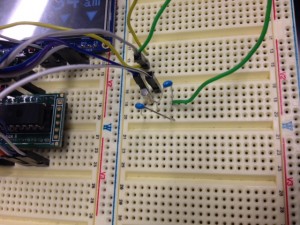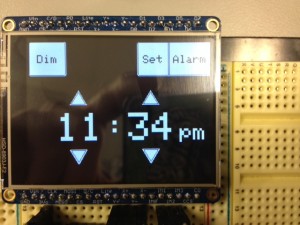Our primary goals for this week were to further implement the EEG reading systems, fully get the real-time clock and alarm clock controls implemented and also begin setting up the audio system of the alarm. We had difficulty accomplishing all these goals mostly due to being away for Thanksgiving break however we did managed to get some things accomplished.
Kyle primarily worked on the EEG portion of the system again. Since we were having difficulties implementing the EEG reading last week, we did a sanity check with the headset using the chipKit UNO 32 board. This source code we are using to base our code off of was originally meant for use on this type of board. We were able to the EEG reading fully working on this board. We also tested the reading using the computer Putty terminal. The text read by UART using this was unintelligible however it was being read once per second. Trying to again implement the UART reading on the PIC32 we were having issues reading the UART register. We are able to get 9 readings off of it and then the program freezes, however we do seem to be reading the correct integer values.
Rich primarily worked on the clock portion of the project again. We were able to get the set real-time clock functionality working and was able to implement the set alarm time functionality working. We were also able to get the alarm control system working and all that is needed now in that portion of the project is to add the audio to go off when the alarm is triggered. We are almost done on the actual digital alarm clock portion of the system. It should be easily accomplished.
The main challenge right now is the EEG readings. We will need to consult our lab instructor in order to figure out our issues with UART as we feel it is majorly blocking necessary progress.


